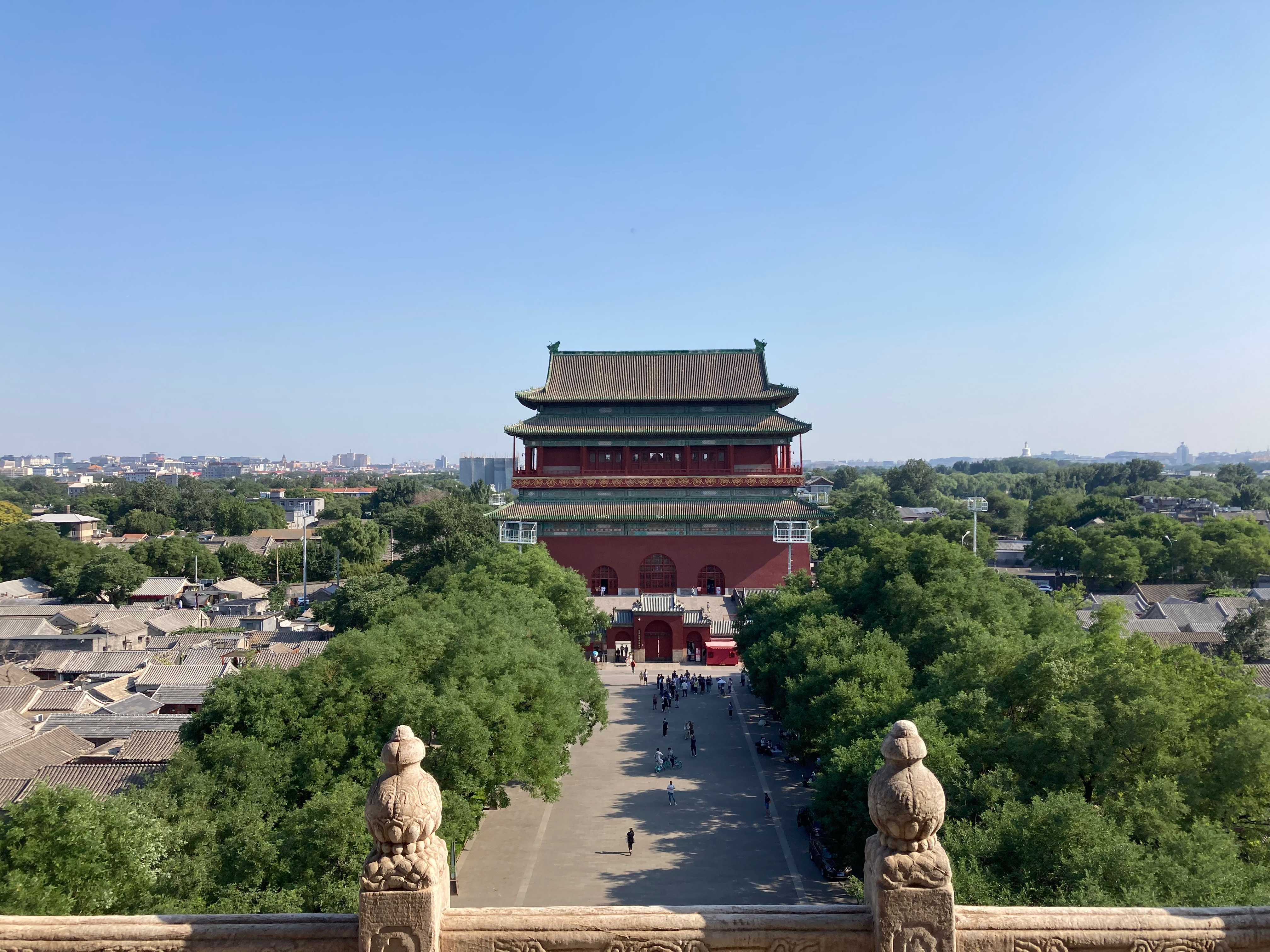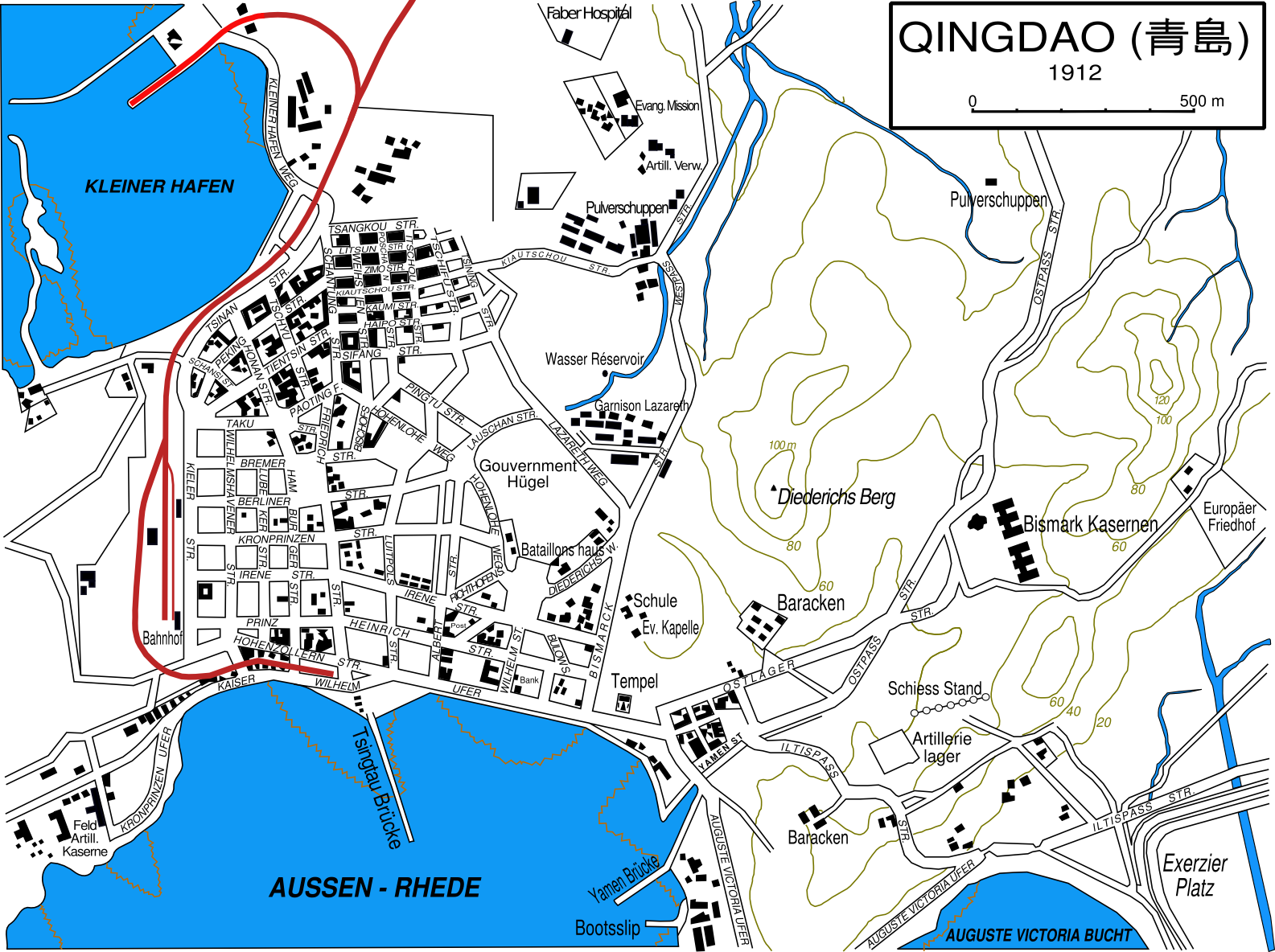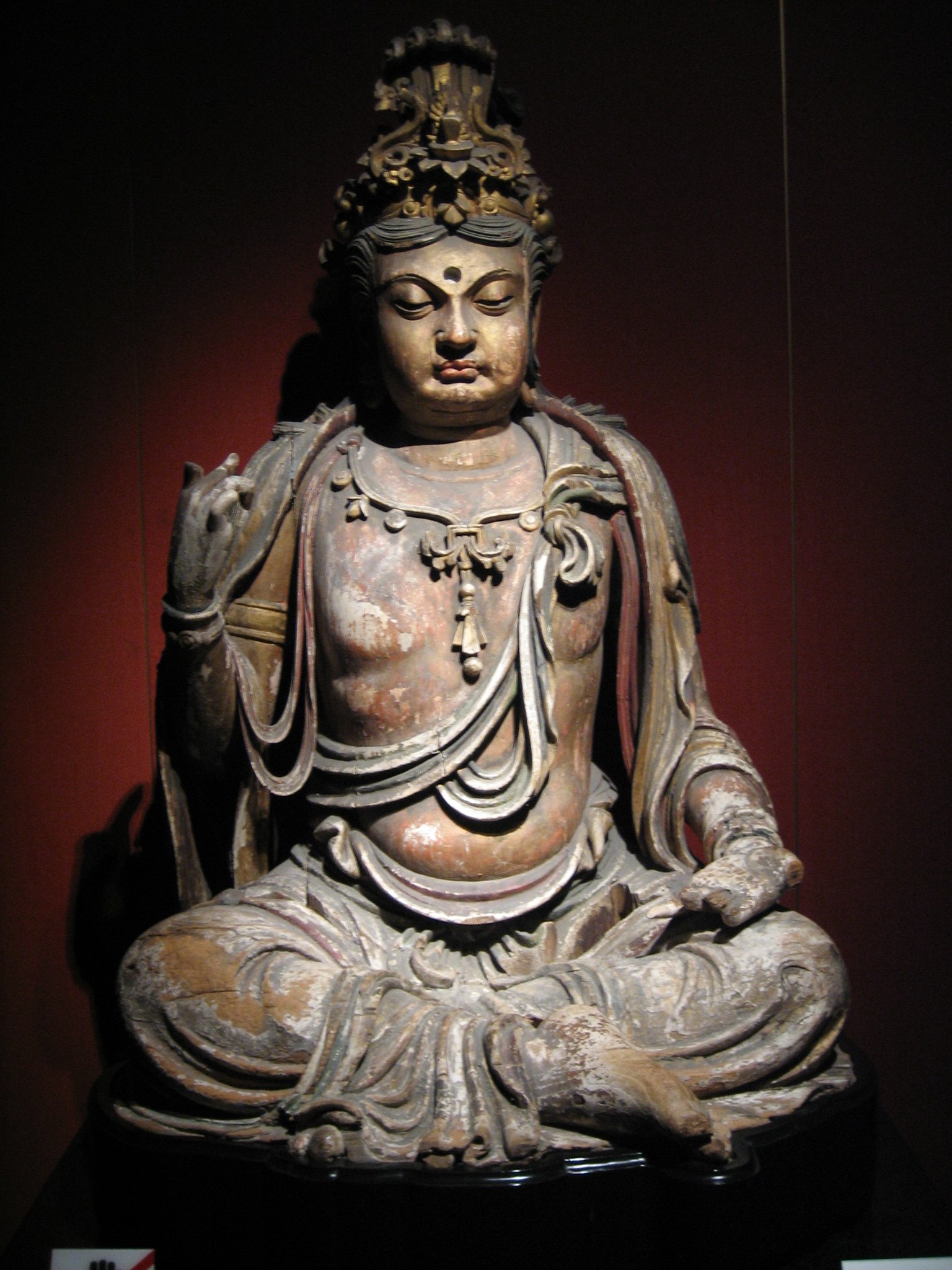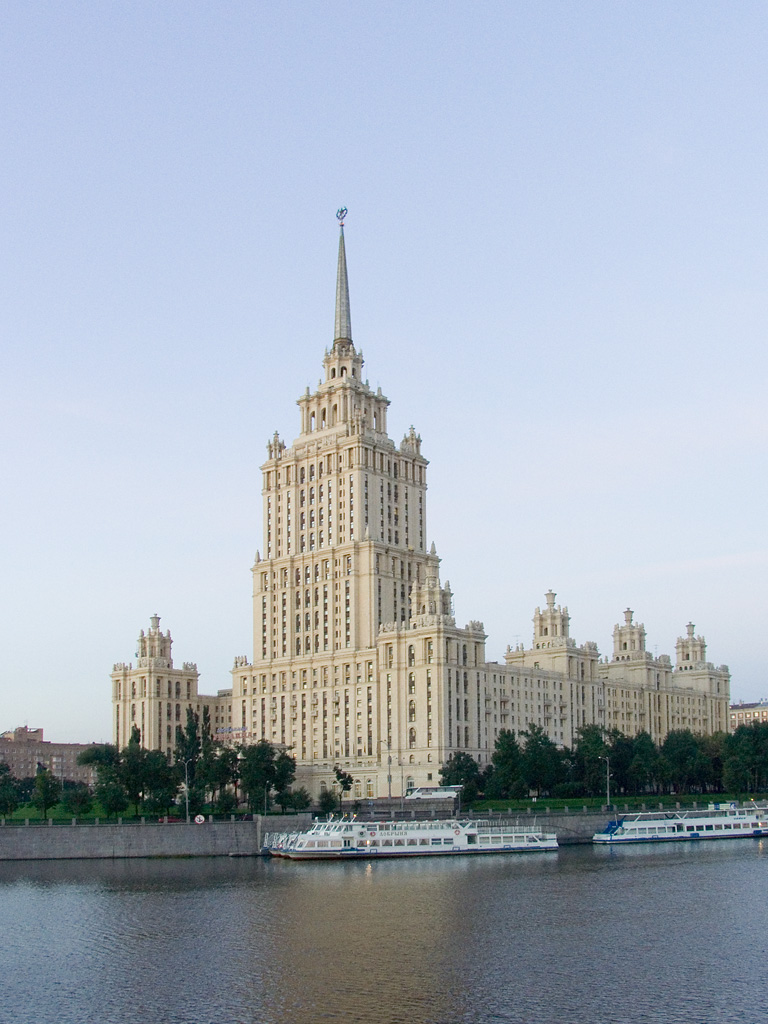|
Beijing Railway Station
Beijing railway station, or simply Beijing station, is a passenger railway station in Dongcheng District, Beijing. The station is located just southeast of the city centre inside the Second Ring Road with Beijing Station Street to the north and the remnants of the city wall between Chongwenmen and Dongbianmen to the south. The Beijing railway station opened in 1959 and was the largest train station in China at the time. Though superseded by the larger Beijing West and Beijing South stations, this station remains the only one located inside the old walled city. Trains entering and leaving the station pass by the Dongbianmen corner tower. With gilded eaves and soaring clock towers, the architecture of the railway blends traditional Chinese and socialist realist influence. Generally, trains for northeast China (Shenyang, Dalian, Harbin) on the Beijing–Harbin railway, for Shandong (Jinan, Qingdao) and the Yangtze River Delta (Shanghai, Nanjing and Hangzhou) on the Beiji ... [...More Info...] [...Related Items...] OR: [Wikipedia] [Google] [Baidu] |
Dongcheng District, Beijing
Dongcheng () is a district of the city of Beijing. It covers the eastern half of Beijing's urban core region, including all of the eastern half of the Old City inside of the 2nd Ring Road (Beijing), 2nd Ring Road with the northernmost extent crossing into the area within the 3rd Ring Road (Beijing), 3rd Ring Road. Its area is further subdivided into 17 subdistricts. Settlement in the area dates back over a millennium. It did not formally become a district of the city until the establishment of the Republic of China (1912–1949), Republic of China in 1911. The name Dongcheng was first given to it in a 1958 reorganization; it has existed in its current form since a 2010 merger with the former Chongwen, Beijing, Chongwen to its south. Dongcheng includes many of Beijing's major cultural attractions, such as the Forbidden City and Temple of Heaven, both UNESCO List of World Heritage Sites in China, World Heritage Sites. More than a quarter of the city's Major national historical and ... [...More Info...] [...Related Items...] OR: [Wikipedia] [Google] [Baidu] |
Beijing South Railway Station
Beijingnan (Beijing South) railway station () is a large railway station in Fengtai District, Beijing, about south of central Beijing, between the 2nd and 3rd ring roads. The station in its present form opened on 1 August 2008 and mainly serves high speed trains. The current station replaced the old Beijing South station, originally known as Majiapu railway station and later renamed Yongdingmen railway station, which stood away. This station was in use from 1897 to 2006. The new Beijing South railway station is the city's largest station, and is one of the largest in Asia. It joins the main Beijing railway station and the Beijing West railway station as one of three main passenger rail hubs in the Chinese capital."South station on track to impress" ''People's Daily ... [...More Info...] [...Related Items...] OR: [Wikipedia] [Google] [Baidu] |
Shanghai
Shanghai, Shanghainese: , Standard Chinese pronunciation: is a direct-administered municipality and the most populous urban area in China. The city is located on the Chinese shoreline on the southern estuary of the Yangtze River, with the Huangpu River flowing through it. The population of the city proper is the List of largest cities, second largest in the world after Chongqing, with around 24.87 million inhabitants in 2023, while the urban area is the List of cities in China by population, most populous in China, with 29.87 million residents. As of 2022, the Greater Shanghai metropolitan area was estimated to produce a gross metropolitan product (GDP (nominal), nominal) of nearly 13 trillion Renminbi, RMB ($1.9 trillion). Shanghai is one of the world's major centers for finance, #Economy, business and economics, research, science and technology, manufacturing, transportation, List of tourist attractions in Shanghai, tourism, and Culture of Shanghai, culture. The Port of Sh ... [...More Info...] [...Related Items...] OR: [Wikipedia] [Google] [Baidu] |
Yangtze River Delta
The Yangtze Delta or Yangtze River Delta (YRD), once known as the Shanghai Economic Zone, is a megalopolis generally comprising the Wu-speaking areas of Shanghai, southern Jiangsu, northern Zhejiang, southern Anhui. The area lies in the heart of the Jiangnan region (literally, "south of the Yangtze"), where the Yangtze drains into the East China Sea. Historically the fertile delta fed much of China’s population, and cities and commerce flourished. Today, it is one of China’s most important metropolitan areas and is home to China’s financial center, as well as a tourist destination and hub for manufacture ranging from textile to automaking. In 2024, the Yangtze Delta had a GDP of approximately US$4.7 trillion, about the same size as Germany. The urban buildup in the area has given rise to what may be the largest concentration of adjacent metropolitan areas in the world. It covers and is home to over 240 million people. With about a sixth of China's population and a ... [...More Info...] [...Related Items...] OR: [Wikipedia] [Google] [Baidu] |
Qingdao
Qingdao, Mandarin: , (Qingdao Mandarin: t͡ɕʰiŋ˧˩ tɒ˥) is a prefecture-level city in the eastern Shandong Province of China. Located on China's Yellow Sea coast, Qingdao was long an important fortress. In 1897, the city was ceded to Germany. For the Germans Qingdao (Tsingtau) was a strategic trade center, port and base for its East Asia Squadron, allowing the German navy to project dominance in the Pacific. In 1914, following the outbreak of World War I, Japan occupied the city and the surrounding province during the Siege of Tsingtao. In 1915, China agreed to recognize Japan's special position in the territory through what became known as the Twenty-One Demands. In 1918, the Chinese government, under the control of the warlord Duan Qirui, secretly agreed to Japanese terms in exchange for a loan. Following the First World War, during the Paris Peace Conference, Japan secured agreements with the Allied powers to recognize its claim to the areas in Shandong, which in ... [...More Info...] [...Related Items...] OR: [Wikipedia] [Google] [Baidu] |
Jinan
Jinan is the capital of the province of Shandong in East China. With a population of 9.2 million, it is one of the largest cities in Shandong in terms of population. The area of present-day Jinan has played an important role in the history of the region from the earliest beginnings of civilization and has evolved into a major national administrative, economic, and transportation hub. The city has held Sub-provincial city, sub-provincial administrative status since 1994. Jinan is often called the "City of Springs" for its famous 72 Artesian aquifer, artesian springs. Jinan is one of the top 35 cities in the world for scientific research as tracked by the Nature Index according to the Nature Index 2023 Science Cities. The city is home to List of universities and colleges in Shandong, several major universities, including Shandong University, Shandong, Shandong Normal University, Shandong Normal, Shandong Jianzhu University, Shandong Jianzhu, University of Jinan, Qilu University o ... [...More Info...] [...Related Items...] OR: [Wikipedia] [Google] [Baidu] |
Shandong
Shandong is a coastal Provinces of China, province in East China. Shandong has played a major role in Chinese history since the beginning of Chinese civilization along the lower reaches of the Yellow River. It has served as a pivotal cultural and religious center for Taoism, Chinese Buddhism and Confucianism. Shandong's Mount Tai is the most revered mountain of Taoism and a site with one of the longest histories of continuous religious worship in the world. The Buddhist temples in the mountains south of the provincial capital of Jinan were once among the foremost Buddhist sites in China. The city of Qufu was the birthplace of Confucius, and later became the center of Confucianism. Shandong's location at the intersection of ancient and modern north–south and east–west trading routes has helped establish it as an economic center. After a period of political instability and economic hardship beginning in the late 19th century, Shandong has experienced rapid growth in recent de ... [...More Info...] [...Related Items...] OR: [Wikipedia] [Google] [Baidu] |
Harbin
Harbin, ; zh, , s=哈尔滨, t=哈爾濱, p=Hā'ěrbīn; IPA: . is the capital of Heilongjiang, China. It is the largest city of Heilongjiang, as well as being the city with the second-largest urban area, urban population (after Shenyang, Liaoning province) and largest metropolitan area, metropolitan population (urban and rural regions together) in Northeast China. Harbin has direct jurisdiction over nine metropolitan districts, two county-level cities and seven counties, and is the List of cities in China by population and built-up area, eighth most populous Chinese city according to the Seventh National Population Census of the People's Republic of China, 2020 census. The built-up area of Harbin (which consists of all districts except Shuangcheng, Harbin, Shuangcheng and Acheng, Harbin, Acheng) had 5,841,929 inhabitants, while the total metropolitan population was up to 10,009,854, making it List of urban areas by population, one of the 100 largest urban areas in the world. H ... [...More Info...] [...Related Items...] OR: [Wikipedia] [Google] [Baidu] |
Dalian
Dalian ( ) is a major sub-provincial port city in Liaoning province, People's Republic of China, and is Liaoning's second largest city (after the provincial capital Shenyang) and the third-most populous city of Northeast China (after Shenyang and Harbin). Located on the southern tip of the Liaodong peninsula, it is the southernmost city in both Liaoning and the entire Northeast. Dalian borders the prefectural city, prefectural cities of Yingkou and Anshan to the north and Dandong to the northeast, and also shares maritime boundaries with Qinhuangdao and Huludao across the Liaodong Bay to the west and northwest, Yantai and Weihai on the Shandong peninsula across the Bohai Sea#Bohai Strait, Bohai Strait to the south, and North Korea across the Korea Bay to the east. As of the 2020 census, its total population was 7,450,785 inhabitants of whom 5,106,719 lived in the built-up (or metro) area made of 6 out of 7 urban districts, Pulandian District not being conurbated yet. Today, Da ... [...More Info...] [...Related Items...] OR: [Wikipedia] [Google] [Baidu] |
Shenyang
Shenyang,; ; Mandarin pronunciation: ; formerly known as Fengtian formerly known by its Manchu language, Manchu name Mukden, is a sub-provincial city in China and the list of capitals in China#Province capitals, provincial capital of Liaoning province. It is the province's most populous city with a population of 9,070,093 as of the 2020 Chinese census, 2020 census, also making it the largest city in Northeast China by urban population, and the second-largest by metropolitan population (behind Harbin). The Shenyang metropolitan area is one of the major megalopolises in China, with a population of over 23 million. The city's administrative region includes the ten metropolitan district (China), districts, the county-level city of Xinmin, Liaoning, Xinmin, and the counties of the People's Republic of China, counties of Kangping County, Kangping and Faku County, Faku. Shenyang has been controlled by numerous different states and peoples during its history. In the 14th century, the ... [...More Info...] [...Related Items...] OR: [Wikipedia] [Google] [Baidu] |
Northeast China
Northeast China () is a geographical region of China, consisting officially of three provinces Liaoning, Jilin and Heilongjiang. The heartland of the region is the Northeast China Plain, the largest plain in China with an area of over . The region is separated from the Russian Far East to the north and east by the Amur, Argun and Ussuri Rivers; from North Korea to the south by the Yalu and Tumen Rivers; and from the neighboring North China to the west by the Greater Khingan Range and Yan Mountains. It is also bounded by the Bohai Bay and Yellow Sea to the southwest, about away from East China's Jiaodong Peninsula across the Bohai Strait, due to be connected via a proposed undersea tunnel. The four prefectures of Inner Mongolia (which is part of North China) east of the Greater Khingan, i.e. Chifeng, Tongliao, Hinggan and Hulunbuir, are sometimes also considered broader parts of Northeast China, and together with the aforementioned three provinces formed what was h ... [...More Info...] [...Related Items...] OR: [Wikipedia] [Google] [Baidu] |
Stalinist Architecture
Stalinist architecture (), mostly known in the former Eastern Bloc as Stalinist style or socialist classicism, is the architecture of the Soviet Union under the leadership of Joseph Stalin, between 1933 (when Boris Iofan's draft for the Palace of the Soviets was officially approved) and 1955 (when Nikita Khrushchev condemned "excesses" of the past decades and disbanded the Soviet Academy of Architecture). Stalinist architecture is associated with the Socialist realism school of art and architecture. Features As part of the Soviet policy of rationalization of the country, all cities were built to a general urban planning, development plan. Each was divided into districts, with allotments based on the city's geography. Projects would be designed for whole districts, visibly transforming a city's architectural image. The interaction of the state with the architects would prove to be one of the features of this time. The same building could be declared a Formalism (art), formalist b ... [...More Info...] [...Related Items...] OR: [Wikipedia] [Google] [Baidu] |









